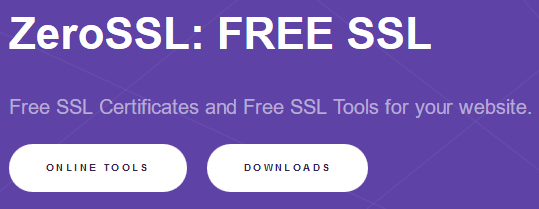Now our Linux servers have SNI enabled (Server Name Indication), don’t you want to be able to install a LetsEncrypt SSL certificate?
This guide will show you three external tools which can be used to obtain a LetsEncrypt SSL certificate which can be installed on your domain using this guide: SSL – Install existing.
Although SSL’s can now be installed on Linux accounts without a dedicated IP, SSL’s can also be install on Windows accounts, the domain just needs a dedicated IP first.
What tools are available?
ZeroSSL.com
Pros:
- Fully in browser process, including CSR generation
- Nice, easy to use interface
- Allows for HTTP and DNS verification
Cons
- You have to manually add the file for HTTP verification or manually add the DNS for DNS verification
- Have to install the SSL certificate manually
GetHttpsForFree.com
Pros:
- In browser process mostly.
- Allows for http verification.
Cons
- Does not allow for DNS verification
- Harder process for beginners – have to run commands from terminal on your local machine
- Have to generate your own LetsEncrypt account key
- You have to manually add the file for HTTP verification or manually add the DNS for DNS verification
- Have to install the SSL certificate manually
SSLForFree.com
Pros:
- Fully in browser process.
- Allows for HTTP, DNS as well as automated HTTP verification using FTP details you provide.
- Easy to use UI
Cons
- Have to install the SSL certificate manually
Although all of these tools can be used to generate an SSL certificate for use on Pipe Ten I prefer ZeroSSL. This is because it is a fully in browser process and user friendly.
If you would like a year or more without renewing, then you can order our fully managed Comodo SSL certificates. Please see more SSL products on our main website.



